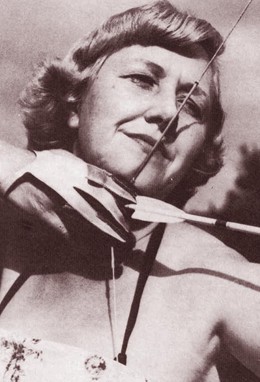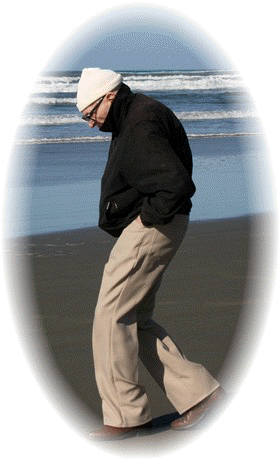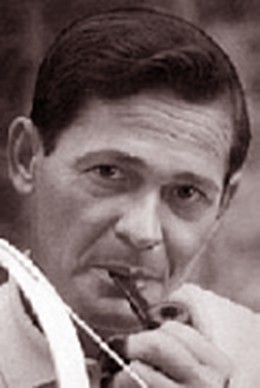Sunday, February 01, 2009
Mimi Miller, TWAC Founder passes away
Mimi Miller, Class of 1977 Archery Hall of Famer passed away January 31st 2009. In October she had celebrated her 100th Birthday. A quote from a recent letter from Maryanne Schumm. "Mimi has the strongest, best heart of anyone I know and I mean that every which way!". The archery world as well as all her students throughout the years will always remember her not only for what she did for archery but for the person she was.
TWAC (Teela-Wooket Archery Camp) founder, Mimi Miller passes away
Information supplied by Maryanne Schumm
On January 31, 2009, Myrtle “Mimi” Miller passed away in Connecticut at the age of 100 from complications of Alzheimer’s disease. Most people who knew Mimi Miller associated her name with TWAC (Teela-Wooket Archery Camp or later, The World Archery Center). The Center would be her greatest le gacy, but certainly not her only one. gacy, but certainly not her only one.
Myrtle K. Miller was born on October 16, 1908 in Grand Rapids, Michigan. She obtained her Bachelor of Science in Physical Education at the University of Michigan in 1930 and later did 20 hours of graduate work at New York University.
Her first work experience was as a physical education teacher at Ottawa High School in Grand Rapids. Many of her students had parents who were archers. Mimi hated archery in college, as she had extremely poor instruction in her archery classes. Because of her students’ interest in the sport, she took a one hour lesson from her brother in law, National Champion and future Hall of Fame member Russ Hoogerhyde. That hour of instruction changed her entire attitude toward the sport. She was able to hit the target and knew why. Realizing the tremendous value of proper teaching techniques, she vowed to share her new found knowledge. She organized a high school archery club that soon had 400 members. Art Young, one of the best bow hunters in the world, gave an evening talk at the high school which brought in money to purchase tackle. Students ran fund raisers for additional equipment, and Myrtle’s patience and enthusiastic efforts provided excellent instruction for many students. Since group teaching methods were non-existent at this time, she developed the system that would one day be the basis of the TWAC instructor courses.
Mimi met Edward B. Miller, married in 1934, and moved to New York City in 1936. It was here that she decided to concentrate on her own shooting, but there were no archery ranges at the time in New York. In order to convince the city that archers deserved a place to practice, she organized the New York Archer’s Club in 1938. The membership grew to over 200 and the New York Recreation Department provided an archery range in each of the four boroughs. With help from the Bell Laboratory Archers, organized by future Hall of Fame member Dr. Clarence Hickman, the archers were able to rent a beautiful indoor space for winter shooting. Through Mimi’s efforts, New York City soon had the largest archery club in the United States at that time. The practice ranges soon paid off...from 1934-1939 she was among the top women archers in the country, winning the Canadian-American Championship, Connecticut State Championship, and New York City Championship.
At the 1939 New York World’s Fair, archery was the only sport at the “Man, His Clothes, His Sports” exhibit. Mimi and Ed conducted daily archery exhibitions and ran an archery tournament every day for a month. The hundreds of archers competing had free admission to the fair, and came from all over the United States. The New York Giants football team (whose sports program at the fair fell through) served as guides in the building. Mimi made sure they all were taught to shoot, and with them put on archery demonstrations for the public in the sports arena. She never passed up an opportunity to publicize the sport!
Myrtle was one of the first to utilize television as a medium to advertise a sport. In 1956 the Robin Hood television series, sponsored by Wild Root, agreed to coordinate with the Robin Hood National Archery Tournament organized by Myrtle and Eddie for boys and girls under the age of 14. Over $1 million of television coverage was provided for education and tournaments in all 50 states, involved coverage by 86 of the then 132 ABC televison stations, and involved over 25,000 children! Ultimately, this Robin Hood instructional and competitive program evolved into the present Junior Olympic Archery Development Program (JOAD). She gave archery demonstrations on CBS and NBC sports telecasts and other programs, including children’s programs “On the Carousel” with Paul Tripp, the “Tex and Jinx Show”, and “Johnny Carson’s “Who Do You Trust”.
In 1951 Mimi worked with the Rockettes of Radio City Music Hall to prepare for a performance of Ivanhoe. She showed them proper archery form and technique so they would look good holding the bows for the performance.
In 1937, with encouragement from their friend Art Young, Myrtle and her husband started Teela-Wooket Archery Camp (TWAC) in Vermont...a center organized to teach instructors how to teach archery and promote the sport. TWAC spent 37 years in Vermont, then moved to the Pocono Sports Camp in Pennsylvania for 10 years, where it became known as The World Archery Center. In 1984 the center relocated to the Pomfret School in Connecticut, where it continued until it ended in 1992. During this uninterrupted 55-year span, Myrtle continued to develop group teaching materials and procedures, like Mimetics, that enabled teachers to teach many archers at the same time. She brought together some of the world’s finest instructors, scientists, craftsmen and shooters who shared her dream. The staff worked for free, and over the years $130,000 in scholarships were awarded to those who were deserving of the honor or to those who could not afford to take the instructors course. Archers were exposed to the special “TWAC spirit”...coaches, archers of all ages, nationalities and levels of expertise, sharing fun, friendship, and knowledge in all areas of archery. Archers came from all over the United States and over 50 countries to take advantage of the excellent training. It is estimated that more than 12 million students have learned about archery from approximately 1500 TWAC-trained instructors! In the 1960’s Myrtle shared her course materials at no charge with the National Archery Association as this had been part of her dream...to help the NAA develop an Instructors Course. The first session outside of TWAC was held at Stone Valley in 1969 and used the TWAC Training Guide until the NAA Instructors Manual was completed several years later.
Some of the notable archers who have been staff members or who have attended TWAC are Jay Barrs, Fred Bear, Bill Bednar, Vic Berger, Julia Bowers, Ann Clark, Jim Easton, Ed Eliason, Dr. Robert Elmer, Bud Fowkes, George Helwig, Dr. Clarence Hickman, Russ Hoogerhyde, Earl and Ann Hoyt, Dr. Paul Klopsteg, Emery Loiselle, Jean Lee Lombardo, Darrell Pace, Charles Pierson, Chuck Saunders, Dave Staples, Hardy Ward and Lura Wilson,.
One of archery's oldest historians and Hall of Famer passed away in Vancover, Washington May 17th while recovering from a fractured pelvis. Diane Miller talked to him a couple days before and he said he was doing well and would be going home soon. He was looking forward to his 99th birthday in July. A remarkable man, who left his mark not only on the archery world but also in the medical field, he will be sadly missed by all those he leaves behind.
Archery Loses another Superstar
Longtime Archery enthusiast, Dr. Charles E."Bert" Grayson, a retired physician and member of the Archery Hall of Fame and Muse um, Class of 2005, passed away May 17 due to complications from a fall. He was born July 24, 1910 in Worth Township, Iowa, the second youngest of nine children. um, Class of 2005, passed away May 17 due to complications from a fall. He was born July 24, 1910 in Worth Township, Iowa, the second youngest of nine children.
While Bert was still young, the family moved to Riverside, Calif., where he was exposed to his lifelong love of the sport of archery through his Boy Scout Master Dr. Paul Simonds and many of Dr. Simonds friends.
His interest began when he won a lemonwood bow from his scout troop by selling the most tickets to the Art Young bow hunters film, "Alaskan Adventures." Later his work with the Boy Scouts included a donation of the Charles E. Grayson Memorial land tract for archery and camping to the Tall Corn Council near Boone, Iowa.
Bert attended Pomona
College in Claremont, California, where he and his roommate formally introduced archery, which was soon accepted as part of the college curriculum. In college he was also a competent wrestler, and football player. He later coached wrestling for the college.
After graduation he received a teaching fellowship in physics which he pursued for a year and then attended the graduate school of physics at the University of California, Berkeley, working toward a masters degree. He later changed his goal from engineering to medicine.
Bert entered
Stanford Medical School in 1936, where he graduated and interned at the
Stanford Lane Hospital
in San Francisco
and received his medical license in 1942. During World War II he served briefly in the military as a physician. After the war, he was an instructor at
Stanford Medical School, later going into private practice in
Sacramento, Calif.
In 1938 Bert married Adda Barr in Boone County, Iowa, and returned to live in Palo Alto, Calif. They retired in 1972 and moved to
Clatskanie, Oregon, where they ran their 300-acre cattle ranch. He also built an archery museum on their land and put his collection of artifacts on display. He was known as a meticulous craftsman and artist.
Eventually his archery collection was donated to the University of Missouri's Museum of Anthropology, where it continues to be on display and is available for study by students and the general public. He also has a display at the Archery Hall of Fame Museum in Springfield, Missouri. In addition to collecting, Bert competed in both flight and target shooting, holding many records. Professionally as a physician, Bert traveled in an administrative capacity, which contributed to his collecting bows and archery tackle from many parts of the world. He was an avid hunter and sought many numerous game animals in the United States, Alaska,
Canada, Mexico and Africa. He also loved photography and in later life enjoyed shooting animals with a camera.
His latest trips were to Hong Kong and Australia for speaking engagements. Bert also made contributions anonymously to other collectors over the years. His book, "Traditional Archery From Six Continents: The Charles E. Grayson Collection," was published in 2007.
At age 91, with the help of a close and dear friend, Dave Brown, he mastered the technology of the computer, Internet, e-mail, and photography. He still was writing articles for Traditional Bowhunter Magazine.
Until his passing, Bertıs mind was as sharp as a tack and stored with information and knowledge. He enjoyed sharing this with everyone he came in contact with.
Bert will be remembered by his family and friends around the world as an individual who preserved treasures of the past, which would have otherwise been lost or forgotten.
Thursday, September 03, 2009
 William J. 'Bill' Bednar, age 84, passed away September 2, 2009. He was born in Yatesboro, Pennsylvania, attended Rootstown High School and was the owner-operator of Portage Archery Center in Suffield. Bill was a member of the Professional Archers Association and National Crossbow Association. In 2007, Bill was inducted into the Archery Hall of Fame during its 24th induction dinner at the museums permanent home in Springfield, Mo., and his son, Rick, had the honor of introducing his father at the induction ceremony. William J. 'Bill' Bednar, age 84, passed away September 2, 2009. He was born in Yatesboro, Pennsylvania, attended Rootstown High School and was the owner-operator of Portage Archery Center in Suffield. Bill was a member of the Professional Archers Association and National Crossbow Association. In 2007, Bill was inducted into the Archery Hall of Fame during its 24th induction dinner at the museums permanent home in Springfield, Mo., and his son, Rick, had the honor of introducing his father at the induction ceremony.
William J. Bednar, 2007 inductee into the Archery Hall of Fame, passed away September 2, 2009, at age 84.
His first experience with a bow and arrow came fairly late in life. In the fall of 1958, at age 33, he and his wife, Edith, attended the Cleveland Sportsman’s Show with another couple. Bednar spent most of the afternoon shooting arrows with his friend at the show’s archery venue while they left the two wives to roam the show on their own.
For months following the event, Bednar could not stop talking about how much he had enjoyed shooting the bow, so his wife bought him a fiberglass bow and arrow set at a local department store for Christmas. But, something about the bow was not right, so he visited an archery shop in a nearby town where the proprietor quickly realized that even though Bednar was right-handed, he was left-eye dominant. He needed a left-handed bow. He quickly retired his wife’s wonderful Christmas present and ordered a brand new “wrong-handed” bow.
In short order he joined the nearby Ravenna Archery Club, where he met local legend, Harry Gilchrest. Gilchrest ran the club, was the high school football coach, and was a great archer in his own right. According to Edith Bednar, “Harry was a great teacher and recognized that Bill was a natural. Right from the start he got Bill involved in tournament shooting. Bill always credited Harry for his rapid climb as a tournament archer.”
In August of 1961, one-year and seven-months after shooting his first bow, he competed as the number three shooter on the USA team that won the World Championship in
Oslo, Norway. Individually, he finished 10th in the world.
Believing that archery should move in the same direction as professional golf, he turned professional the following year and went on to win the first ever Professional Archery Association (PAA) Championship held in Daytona Beach, FL.
Bednar was much more than a natural archer. He was also single-minded, determined and obsessively focused about everything he put his mind to; traits that turned him into a champion archer but also led him to become a prolific inventor and self-taught master carpenter and machinist. His wife Edith summed up his talent in plain terms. “I don’t know how many patents Bill held. There were many. He could fix anything or build anything. I never saw anyone so determined. If he put his mind to something, there was no talking to him or getting in his way. You just couldn’t stop him until he finished` whatever he set out to do.”
|